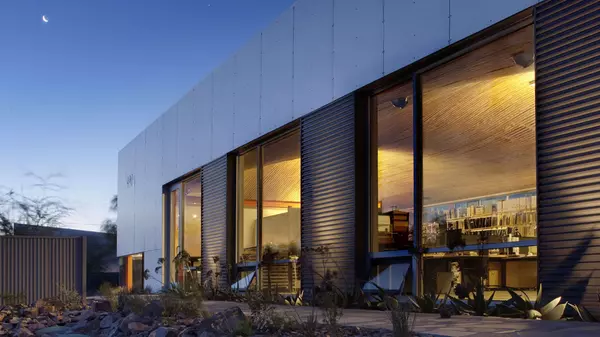Massive, tennis-anchored sports complex in play for Chula Vista Bayfront
A development group that previously explored building a Major League Soccer stadium on the Chula Vista Bayfront is back, albeit absent one partner, with a remastered proposal that is equally ambitious and may be more plausible.
The project, named Pangaea, is anchored by a large tennis complex and complemented by a water polo academy, a handful of hotels, a retail village, blue tech office buildings and a public trail, according to the proposal submitted to the Port of San Diego and obtained by the Union-Tribune through a public records request.
The project also features an IMAX theater by Paragon Entertainment and an elevated mini-golf venue co-owned by Tiger Woods called PopStroke, the proposal states. A 50,000-seat soccer stadium is envisioned for a second phase of development.
Pangaea is the brainchild of Virginia Beach-based commercial real estate firm Divaris Group of Companies, its development and planning subsidiary, The McGarey Group, and locally renowned architect Tucker Sadler Architects Inc. The team also includes Provident Resources Group, a nonprofit that specializes in facilitating financing for public-private partnerships.
The team’s superlative-laced proposal describes Pangaea as a world-class destination beyond compare. It is proposed for 124 acres of bayfront property at 990 Bay Blvd., south of the recently opened Gaylord Pacific Resort and Convention Center.
“In combining the finest broad-scale tennis training in North America, including leading-edge wellness, spa and physical therapy, with a spectacular and challenging 36-hole putting experience, the probability of adding professional soccer and entertainment to the campus, the supporting mixed-uses of hotel, retail, food & beverage, entertainment and office are activated in a way no project has been delivered in America. Ever,” the proposal states. “The connectivity to the community culture and bayfront is a marriage of interests long overdue and a bold signal that the district, the community of Chula Vista, and all stakeholders are committed and entrusted to enhance and protect the waterfront for many generations to come.”
The document’s site plan depicts a Latin Quarter-inspired retail center and pedestrian plaza with hotel rooms atop shops at the north end of the project site, south of J Street. The retail street meanders south toward the PopStroke venue, just north of a watershed at L Street that bifurcates the site and empties into San Diego Bay. Opposite the channel are more hotels and the tennis complex, which includes a central tennis venue and 34 surrounding courts of varying size, surfaces and purpose.
The stadium and water polo academy are located beyond the tennis facility. The blue tech office buildings are situated near the project’s southern border, where Naples Street would intersect the site.

Tuesday, the Pangaea project will be considered by the Port of San Diego’s seven-member board in open session. The agency has permitting authority for the land, subject to review and approval by the California Coastal Commission. Port staff are asking the commissioners to authorize a six-month exclusive negotiation period so that the development team can formalize a partnership with an unnamed professional tennis player who will be the face of Pangaea’s tennis complex.
The requested board action comes more than 18 months after the agency first signed a nondisclosure agreement with the development team, public records show. The development team submitted its original proposal in February 2024, one month after the contract was signed. A second proposal with additional information was submitted in February of this year. The most recent submittal includes some financial details that have been redacted.
Port staff and an outside real estate consultant firm have discussed the unsolicited Pangaea proposal continuously since the original submission, the records show. Commissioner Ann Moore, who represents Chula Vista on the board, has been included in some meetings. In April, board members discussed the proposed real estate deal for the 990 Bay Blvd. site in closed session.
“Port staff have been conducting initial due diligence on a mixed-use development proposal for a 124-acre area in the Otay District of the Chula Vista Bayfront. The Board of Port Commissioners will receive a presentation in open session at their July 15 meeting. The public is welcome and encouraged to attend the meeting and/or to watch online,” Brianne Page, a spokesperson for the agency, said in an emailed statement. “Staff believe the proposal represents a unique opportunity to potentially partner with an experienced developer on a project that, according to preliminary findings, has strong market demand.”
If the board advances the proposal, the development team will conduct “robust community and stakeholder outreach,” said Tony Gordon, the port’s vice president of real estate.
Staff’s current request for a short-term exclusive negotiating agreement with the development team suggests that the Pangaea proposal has more legs than a similar plan that was in the works in 2023. Divaris and Tucker Sadler previously teamed on a proposal for a soccer and hotel complex that seemingly fizzled because a former partner, Petra Development, did not appear to have ties to the MLS, as it maintained.
However, many of the original proposal’s elements remain intact, including the stadium.
Pangaea’s stakeholders will pursue an MLS team, a USL Championship league team or a Mexican Football Federation team as part of a second development phase, according to the proposal. Alternatively, the stadium could be used for concerts and festivals, the document states.
“The expanse of the stadium encompasses what will be the largest and most technologically advanced stadium in the United States,” the document states. “Designed to exacting specifications, allowing for multi-use of professional soccer, tennis and/or major acts/live entertainment. It will be, without a scintilla of doubt, jealously guarded as the region’s catalyst within the booming South County marketplace, trading heavily on the advantages of its waterfront location, main-line connectivity with local and cross-border commerce, and the ever-emerging local resident population of Chula Vista.”
The project site, referred to as the Otay District within the Chula Vista Bayfront Master Plan, was the home of the since-demolished South Bay Power Plant. It was once considered as a potential stadium location for the former San Diego Chargers.

The Chula Vista Bayfront’s Otay District is currently entitled for an RV park, industrial business park use and a passive public park, meaning the Pangaea project will, if it continues to move forward, require a Port Master Plan Amendment and review under California’s Environmental Quality Act, which are lengthy, multi-year processes.
The land in question is not currently being advertised by the port for lease or redevelopment. The agency’s board will need to waive its own policy requiring a competitive solicitation process in order to enter into the exclusive negotiating period.
A report prepared by port staff for Tuesday’s meeting states that it would be challenging for the port to attract proposals through a competitive process without first updating land entitlements, which could take years. As such, the agency is justified in waiving board policy related to a competition solicitation, the report states. Other justifications cited include the strength of the development team, a local appetite for tennis courts, the project’s public access features and the prospect of an elite athlete adding brand cachet to the effort.
The Pangaea proposal calls for phase-one development of the tennis center and water polo academy alongside 300,000 square feet of retail space, 700 hotel rooms spread across three properties, a 150,000-square-foot blue tech building and a 2.3-mile public trail. The second phase includes the soccer stadium, another two hotels with 800 rooms, three more 150,000-square-foot office buildings and 9.3 acres of active open space envisioned as community soccer fields.
The Union-Tribune contacted project leaders — McGarey Group CEO Denver McGarey, Divaris Group CEO Gerald Divaris and Tucker Sadler CEO Greg Mueller — for additional information. Janelle Burchfield, a spokesperson for Divaris Group, said the team is not in a position to share details beyond what is included in the staff report.
To date, the port has conducted preliminary due diligence, tapping real estate consultant Jones Lang LaSalle for a market demand study focused on the tennis facility. Staff also reviewed the developer’s background and qualifications, and determined that the team has a track record of financing complex mixed-use projects, the staff report states. The agency has received a financial forecast, or what’s known as a pro forma, Gordon, the real estate executive said. The group’s financing assumptions, which were not disclosed, have not yet been vetted, according to the staff report.
Founded in 1974, Divaris Group of Companies is a commercial real estate brokerage and services firm that manages or leases more than 37 million square feet of office, retail and industrial space across the U.S., according to information provided to the port. The firm, for instance, manages portions of The Town Center of Virginia Beach, a large mixed-use development with residences, hotels, retail and a performing arts theater.
Divaris Group subsidiary The McGarey Group was the retail development consultant on Atlantic Station, a 138-acre mixed-use development in Atlanta. The firm, which has an office in Coronado, also handles leasing for USC Village.
Headquartered in San Diego, Tucker Sadler Architects designed and helped entitle the Rady Shell at Jacobs Park and Portside Pier, projects that are both on port tidelands.
The Pangaea proposal lists a number of additional team members, including hotel management and development firm Highgate as the hospitality provider. Swinerton is listed as the general contractor. The water polo training academy, 6-8 Sports, plans to relocate to the Chula Vista complex, the proposal states. The company was co-founded by Olympians Tony Azevedo and Maggie Steffens.
The six-month exclusive negotiating agreement is atypically short for projects of this magnitude. However, Gordon said the port uses shorter-term contracts to accomplish immediate goals before making a longer-term commitment. In this case, the primary goal is for the developer to formalize the partnership with the elite professional athlete, he said. At the end of the period, staff will return to the board to report on progress and seek further direction.
Categories
Recent Posts










GET MORE INFORMATION


